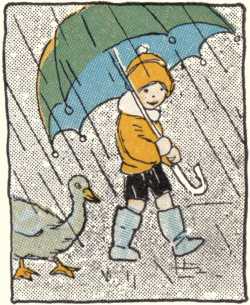How “safety” news gets shaped: a litigation consultant “at the request of trial lawyers … combed through hundreds of coroner’s reports and media accounts” and before long ABC had an alarming story to run. More: Check our comments, where readers have been digging up further interesting information about “PetAccessDangers.org”.
Posts Tagged ‘safety’
Household hazard causes estimated 86,000 injuries/year
Shouldn’t the government be considering a ban? (H/t: reader D.W.). More: TYWKIWDBI.
Milford does not believe in hugs
Actually, the principal of East Shore Middle School in that Connecticut municipality has banned not just hugs but high-fives, horseplay and “physical contact” of any sort, per WCBS-TV.
CPSIA chronicles, March 27

Short takes for the weekend:
- U.S. Rep. Jeff Fortenberry (R-Neb.) has introduced H.R. 1692, a bill to exempt ordinary books from the law’s lead limits; the American Library Association immediately endorsed the bill [ALA District Dispatch]
- Lead poisoning, the Law of Diminishing Returns, and the fanaticism of “zero” as a goal [Fenris Lorsrai] “Dangerous until proven safe” [Coyote Blog]
- The very popular style site Dooce gives the law a mention in a review of a handmade hippo wood teether;
- From Ed Driscoll/Pajamas Media, a new Silicon Graffiti video: “2009: A Book Banning Odyssey”. We get kindly mentioned.
- His company can comply with CPSIA and carry on as before. So why is he so upset? [Rick Woldenberg] And Darleen Click picks up on Woldenberg’s parody post-CPSIA toy “catalog” [Protein Wisdom]
- “It wouldn’t be fair ’cause everybody wants to ride”: Kids themselves, mostly ages 7-9, comment on the minibike ban [Valley News] Some thoughts on why much of the media began to “get” the off-highway-vehicle (OHV) ban before it started to realize the law’s implications for books, apparel, toys and so forth [Wacky Hermit]
- Could Canada be preparing to repeat some of the errors of CPSIA in its own law? Is someone alerting the folks in Ottawa to try to make sure that doesn’t happen? [ecoDomestica; Product-safety bill C-6 #CCPSA, successor to Bill C-52; Tim Holtorf, Tim & Zodi’s and followup]
- Just made my travel reservations for Washington, D.C. April 1; I’ll be observing the CPSIA rally on Capitol Hill. And you?
CPSIA and the “precautionary principle”

If CPSIA is premised on anything, it’s the idea that before makers of goods place items on the market, they should have to shoulder the burden of proving that they’re safe, even if it seems very, very unlikely on the face of it (as with books, cotton bibs, ballpoint pens, etc.) that they’re doing any significant harm. Is this perhaps an early application of the much-debated “precautionary principle“, which proposes that gaps in scientific knowledge be resolved against those who want to introduce anything new or potentially dangerous? Deputy Headmistress wonders. She also links to Rick Woldenberg who continues his revisionist looks at the Great Toy Scare of 2006-7, noting that in one much-publicized recall of 436,000 toys by Mattel, the trigger for the recall was that “TWO CANS OF PAINT slipped through its safety systems, and were spread ratably over 436,000 units. Hmmm – how dangerous do you think one Sarge car would be with 1/218,000th of a can of paint on it? This event was one of the sparks that triggered the mania leading to the CPSIA – the same mania that now sweeps up libraries.”
Brian Micklethwait, a while back, had a further relevant thought about whether the Precautionary Principle has itself been proven safe.
More: An interesting contribution from Dan Marshall at Change.org.
Public domain graphic: Grandma’s Graphics, Ruth Mary Hallock.
CPSIA: Powersports, crystals, and stranded inventories
With large inventories of kid-sized motorbikes, mini-ATVs, and similar products rendered worthless and unsalable under tarps or in back storage rooms, the Motorcycle Industry Council now estimates that the economic damage from the Consumer Product Safety Improvement Act in its sector of the economy alone could reach $1 billion in 2009 if Congress does not act to restore the products’ legality. Joe Delmont at DealerNews has more information on how that figure was arrived at. Two weeks ago we cited an estimate that the frozen inventory alone exceeds $100 million in value; the larger figure adds in the cost of payroll and insurance at dealerships while they wait for the ban to be lifted, lost service and accessory sales, and so forth. It apparently does not count harms to tourism and recreation sectors in parts of the country that draw a family vacation trade based on use of the vehicles (see, e.g., ShareTrails.org, Americans for Responsible Recreational Access). Since the vehicles are intended for outdoor use, the weeks leading up to and including spring — in other words, now — are ordinarily their prime selling season. Some recent coverage previously unlinked: Chico, Calif., Enterprise-Record, WDAY Fargo, N.D., Orlando, Fla. Local6, WCTV Tallahassee, Fla., Gloversville, N.Y. Leader-Herald, Kingsport, Tenn. Times-News. Forums: cpsia-central, VitalMX, Motorcycle Addicts, and many more.

The minibikes fall into a category of products for which the drafters of CPSIA made it particularly hard to obtain exemptions, namely products that concededly do contain a more than infinitesimal quantity of lead in a normal and accessible component. Yesterday, the CPSC published (PDF) its proposed rule on the subject. In it, the commission staff explain the stringent legal requirements governing such waivers, and why they often do not allow the commission to grant “common sense” waivers even where risks of harm are very low and costs of regulation are very high (pp. 7 et seq of the document, which fall on pp. 9 et seq of the PDF). In other words, the minibike dealers are out of luck unless they can convince (or persuade Congress to take the issue away from) the implacable Henry Waxman, who in turn tends to take his cue on these matters from Public Citizen and that group’s allies.
The powersports dealers aren’t the only ones stranded. At The Smart Mama, lawyer/lead testing consultant Jennifer Taggart ponders what might amount to “the end of bling” in kids’ wear. Genuine crystals by definition include lead, as do many rhinestones, although cheaper plastic imitations will more often be free of it. Trade groups have petitioned for an exemption, but given the law’s stringency (calling for the submission of peer-reviewed data, for example) it is far from clear that the commission can grant their requests. It will be easy in some quarters to dismiss the whole matter with a wave: who cares about mere embellishments, anyway?

It’s not so easy to be dismissive if you’re, say, a teacher of Irish step dancing, with a stock of performance dresses in youth sizes (quite possibly with crystals, rhinestones or sequins, since nothing picks up stage lights the way they do). That stock of costumes, which might even be your most costly asset, by law at least may now occupy the same frozen contraband category as those tarped-over new youth minibikes at the sports dealer’s. As message-boarder “GailV” put it, “The dresses are worn for about 15 minutes at a time, the possibly lead-containing parts never touch the child, but it’s still illegal.” For more on the dismay CPSIA has struck into the Irish dance apparel community, see Irish Dance Moms, Fashion Incubator Forums, and Voy Forums comments here, here, and here (“Heidi”: “Most of us would like to be successful and running legitimate (law abiding) businesses. I want to grow my business, not hide in the shadows looking for ways to circumvent the law. Besides, the jealous world of Irish dance is full of potential whistle blowers.”)
More: In comments, Jennifer Taggart reports more distress in the bling sector.
California towns ban speedboarding
No doubt there are also other reasons why councilors might vote to keep daredevil and extreme skateboarders off public streets, as the L.A. Times is reporting, but the liability climate can’t help:
In 2004, a 17-year-old boy skating down a Mission Viejo street hit “an alleged defect in the street and took a tumble. In a bicycle he would have rolled right over it,” [self-insurance pool executive Jonathan] Shull said.
The boy suffered a brain injury and his family filed suit, alleging municipal negligence and asking for money to help care for him for the rest of his life.
Under state liability law, a city might have to pay the full settlement if a jury finds it was even 1% liable for the injury, according to Shull.
CPSIA: The children’s product safety “crisis” that wasn’t
Rick Woldenberg has been looking into it:
It’s certainly true that children have been checking books out of libraries for many, many years with only paper cuts to show for their reckless behavior. And thrift stores have sold children’s clothing and strollers for years without incident, but apparently no one knew the “dangers” that lurked within. Indeed, all of these items have been considered safe until February 10, when magically they will become unsafe unless proven otherwise.
According to reports from the field, zippers and snaps on kids’ garments are among the components most likely to flunk the new CPSIA standards. In all probability, millions of existing, already sold garments would flunk for similar reasons. Yet have CPSIA advocates pointed to even a single instance in which an American child has been poisoned by garment zippers or snaps? Could this be because kids do not as a rule detach and eat zippers and snaps? “Why aren’t we seeing many claims of injury from all the dangerous children’s products still legally available in the market?” Woldenberg asks. “Shouldn’t we be seeing outrageous injury statistics right now, currently”?
To put it differently, advocates seem to have taken a few genuine instances of injury from distinctive, atypical products (lead jewelry, powerful ball magnets) and used them to manufacture an imaginary crisis in the safety of children’s products generally. But there was never any general crisis of children’s product safety.
Following up, as part of a more general critique of CPSIA advocates’ misrepresentations — which should be read in its entirety, as it makes many other valuable points — Woldenberg analyzes the purportedly alarming data on product recalls involving children (Excel spreadsheet). Separately, Wacky Hermit has been looking at the recall figures as well. She concludes:
Of the 63 recalls that would have been prevented by CPSIA, only 1 resulted in an injury (a child ingested lead paint from a crib and had elevated blood levels of lead). This means that had CPSIA been in place for 2008, one child would have been helped.*
If we’re going to extrapolate one or a handful of injuries into a supposed national crisis, we might as well deduce a “children’s bathing crisis” from a bathtub drowning, a “children’s kitchen crisis” from a stovetop scalding or a “children’s transportation crisis” from a highway smashup. Common Room has a wrap-up which also should be read in full:
the majority of recalls (by an astronomical number) are not because a item has actually harmed anybody, but because the CPSC or the company determine that perhaps a particular item might possibly harm a child- and, while it flies against our intuitive, emotional reaction to the news that an item has lead, not all lead products are the same. The lead in a kid’s mini-bike tire valve is not as dangerous as the lead in paint on a toddler’s block. … The CPSIA treats real, imagined, and nonexistent threats exactly the same, and that is not sound policy.
*More: Jennifer Taggart writes to say that looking at past recalls does not make it possible to assess the law’s full effect since most items covered by CPSIA had not been subject to federal regulation (except under general catchall provisions). So the generalization quoted above should probably have included some limiting language to that effect.

January 30 roundup
- Irvine, California class-action lawyer Sandeep Baweja: sorry, I bet the class’s $2.7M wage/hour settlement on the stock market and lost it [ABA Journal, WageLaw]
- Litigant alleges his iPod playlist is worth $1 trillion; also, another kicked-by-exotic-dancer lawsuit [Lowering the Bar]
- Lawyers representing victims of Long Island’s “Agape” Ponzi scheme would do well to be modest [Scott Greenfield]
- More on that litigation filed by Dallas developer H. Walker Royall against author Carla Main, who wrote a book critical of eminent domain abuse; her publisher, Encounter Books (which is also publishing a book of mine); a reviewer, and his newspaper; and even eminent scholar Richard Epstein, for giving a blurb [Real Clear Politics, Somin @ Volokh, Sullum/Reason “Hit and Run”, earlier]
- “OMG, there’s mercury in the high-fructose corn syrup!” scare doesn’t sound very scare-worthy [Coyote]
- Another reason we (sometimes) go too far in search of safety: “Availability Bias and Water Landings” [Cernovich]
- Supreme Court mulls whether to grant certiorari on Bilski (business methods patent) case [SCOTUS Blog]
- Trial judge lops $32 million off that $55 million verdict against San Diego Gas & Electric for helicopter crash into unlit utility tower [CalBizLit]
CPSIA: Part II at Forbes.com
Just as my earlier piece on CPSIA was going to press last Friday at Forbes there came a new development: Reps. Henry Waxman (D-Calif.) and Bobby Rush (D-Ill.), who sponsored the law and have opposed efforts to revisit it, issued a letter that seemed to soften their stance a bit and hold out hope for more exemptions. The magazine asked me to analyze these new developments and the result is up now. Unfortunately, the news is bad: the letter’s suggestions for exemptions are piecemeal, narrow, and much too late. We are still on course for a calamity should the law’s provisions go into effect Feb. 10 and (later round) in August — a calamity that Waxman and other sponsors of the law had every reason to see coming when they passed the bill last year.
In the mean time, as I point out, the Waxman/Rush letter raises the question of whether our leaders on Capitol Hill realize that ordinary children’s books are often bound with metal staples, and that toddlers seldom convey to their mouths such objects as bicycle tires and dartboards. The piece, again, is here (& Matt Bandyk, U.S. News).
More: In comments on an earlier post, kids’ wear entrepreneur Amy Hoffman says the New York Times still has not covered this debacle — a crucial point, since it’s hard to get an issue truly onto the news agenda at other highly ranked media outlets if the Times refuses to notice it (though some are covering the story anyway, as with Bloomberg in a pretty good piece today). There’s something truly crazy here, given that the Times plays a conscious role as a key trend-spotter in both the design world and the apparel trade, as well as the world of law and governance.
In addition, Common Room provides some sorely needed guidance to protesters as to where their CPSIA outrage should be directed: the fact is that Henry Waxman, as chair of House Commerce, is by far the #1 decisionmaker in whether or not this law will be changed. (Next in importance? His counterparts over at the U.S. Senate.) Protests to other House members are significant mostly in creating pressure on Waxman; the ordinary course of business in the House is to leave these matters to the Committee chair, so protesters must hope to get across the message that the ordinary course of business won’t do this time. As for the incoming Obama administration, as Common Room explains, it has few if any ways of intervening directly to prevent a business calamity on Feb. 10 and a further calamity in August; its main power is the power of picking up the phone and jawboning Waxman with the message that he cannot expect cooperation on unrelated things he wants unless he un-bottles up legislation to fix CPSIA. Waxman is also known to listen to the lawyerly pressure groups like Public Citizen and U.S. PIRG, and to Consumers’ Union. My personal view is that while it’s pointless to try to change the minds of these three groups — they will remain utterly in the grip of their ideology or constituency, and unsympathetic to producers — they might be made to see the prudence of urging compromise on Waxman lest national attention to the issue damage their own images.
